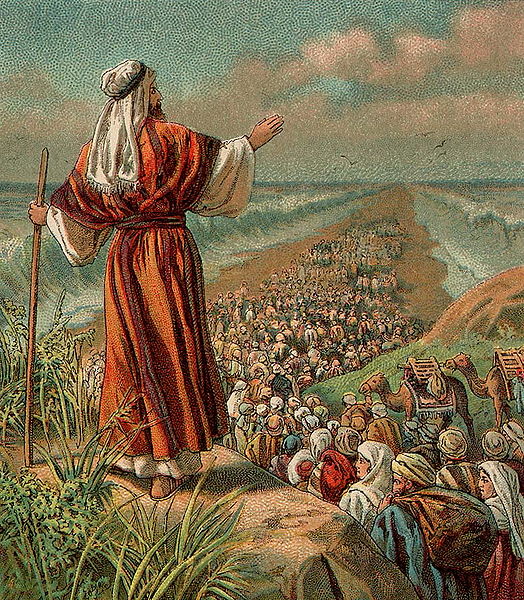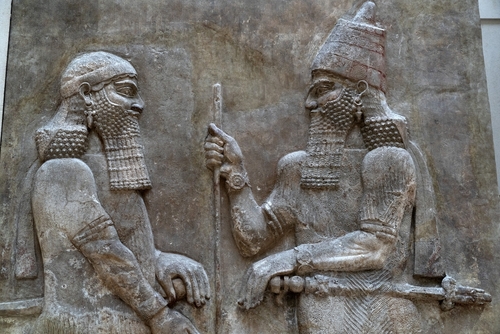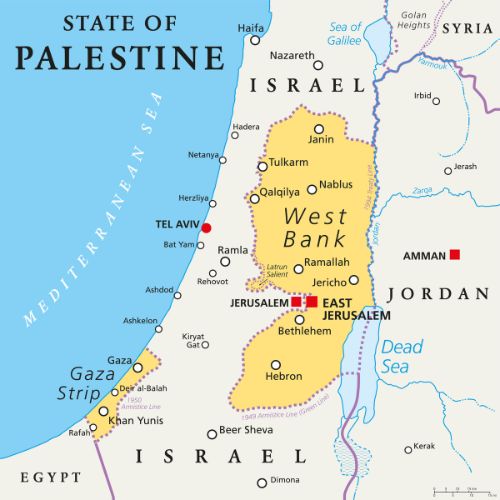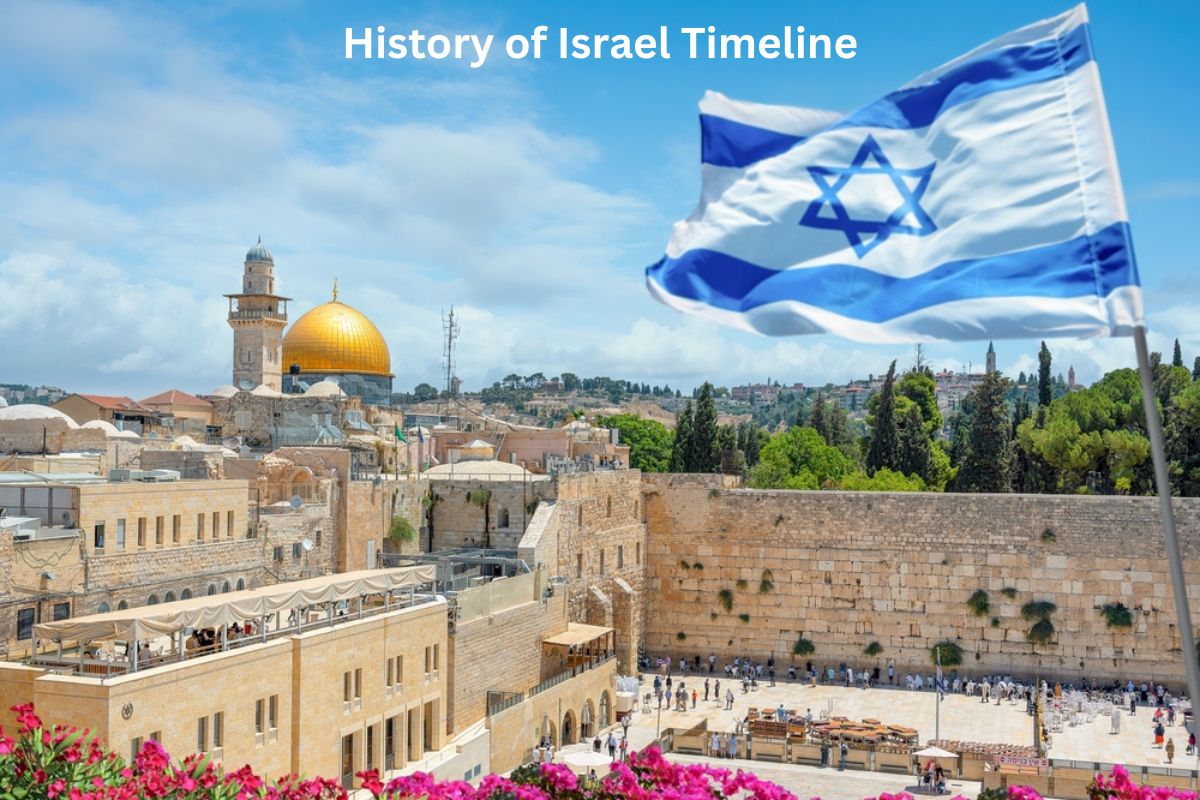Israel, a nation with a rich and complex history, occupies a unique place in the Middle East. Its story encompasses millennia of historical, religious, and geopolitical significance.
From biblical tales of Abraham and Moses to modern conflicts and peace agreements, the history of Israel is marked by a continuous interplay of cultures, faiths, and political forces.
This brief introduction sets the stage for a deeper exploration of Israel’s multifaceted journey through time.
| Year | Event |
|---|---|
| c. 2000 BCE | Abraham migrates to Canaan |
| c. 1300 BCE | Moses leads the Exodus from Egypt |
| c. 1200-1000 BCE | Israelite tribes settle in Canaan |
| c. 1020-1000 BCE | Saul becomes the first king of Israel |
| 930 BCE | Kingdom of Israel splits into northern and southern kingdoms |
| 722 BCE | Assyrians conquer the northern Kingdom of Israel |
| 586 BCE | Babylonians conquer the southern Kingdom of Judah, First Temple destroyed |
| 539 BCE | Persians allow Jewish exiles to return and rebuild the Temple |
| 332 BCE | Alexander the Great conquers the region |
| 167-164 BCE | Maccabean Revolt and reestablishment of Jewish independence |
| 63 BCE | Roman Republic takes control of Judea |
| 70 CE | Romans destroy the Second Temple |
| 135 CE | Bar Kokhba Revolt and exile of Jews from Jerusalem |
| 4th-7th centuries CE | Byzantine Empire controls the region |
| 7th century CE | Arab Muslim conquest of Jerusalem |
| 1099 | First Crusade, European Christians capture Jerusalem |
| 12th-13th centuries | Crusaders and Muslim forces fight for control of Jerusalem |
| 1517 | Ottoman Empire captures Jerusalem |
| Late 19th century | Zionist movement gains momentum |
| 1917 | Balfour Declaration expresses support for a Jewish homeland |
| 1947-1948 | UN approves partition of Palestine, State of Israel established |
| 1948-1949 | First Arab-Israeli War (War of Independence) |
| 1967 | Six-Day War, Israel occupies West Bank, Gaza, Sinai, and Golan Heights |
| 1979 | Israel signs peace treaty with Egypt, return of Sinai |
| 1993 | Oslo Accords begin peace process between Israel and Palestinians |
| 2005 | Israel unilaterally withdraws from Gaza Strip |
| Ongoing | Complex political, security, and territorial issues in Israel’s history |
Timeline of the History of Israel
c. 2000 BCE – Abraham migrates to Canaan
Around 2000 BCE, according to biblical accounts, Abraham, considered the patriarch of the Israelite people, migrated from the city of Ur in Mesopotamia to the land of Canaan.
Also Read: Facts About the Israeli Palestine Conflict
This migration marked the beginning of the Israelites’ connection to the region that would later become known as Israel.
c. 1300 BCE – Moses leads the Exodus from Egypt
In the early 13th century BCE, as recounted in the Hebrew Bible (Old Testament), Moses played a pivotal role in leading the Israelites out of slavery in Egypt during the event known as the Exodus. This event is foundational in Jewish history and is commemorated annually during Passover.

c. 1200-1000 BCE – Israelite tribes settle in Canaan
After the Exodus and a period of wandering in the desert, the Israelite tribes began to settle in the land of Canaan, which they believed had been promised to them by God.
During this time, the Israelites lived as a collection of loosely connected tribes rather than a unified nation.
c. 1020-1000 BCE – Saul becomes the first king of Israel
The Israelite tribes eventually desired a centralized leadership, leading to the anointing of Saul as the first king of Israel around 1020-1000 BCE. Saul’s reign marked the establishment of the monarchy in Israel, though it would later be succeeded by King David and then King Solomon.
930 BCE – Kingdom of Israel splits into northern and southern kingdoms
After the death of King Solomon, the Kingdom of Israel was divided into two separate entities: the northern Kingdom of Israel, with its capital in Samaria, and the southern Kingdom of Judah, centered around Jerusalem.
Also Read: Timeline of the Kings of Israel
This division was a result of political and religious tensions and would shape the course of Israel’s history, as both kingdoms had distinct rulers and experiences.
722 BCE – Assyrians conquer the northern Kingdom of Israel
In 722 BCE, the Assyrian Empire, under King Shalmaneser V and later King Sargon II, successfully conquered the northern Kingdom of Israel. This marked the end of the Kingdom of Israel as an independent entity.
Many Israelites were exiled, and the ten northern tribes largely disappeared from historical records, becoming known as the “Ten Lost Tribes.”

586 BCE – Babylonians conquer the southern Kingdom of Judah, and the First Temple is destroyed
In 586 BCE, the Babylonian Empire, under King Nebuchadnezzar II, captured Jerusalem and destroyed the First Temple, which had been the religious center of the Kingdom of Judah.
This event, known as the Babylonian Captivity or Babylonian Exile, resulted in the exile of many Judeans to Babylon.
539 BCE – Persians allow Jewish exiles to return and rebuild the Temple
In 539 BCE, the Persian Empire, led by Cyrus the Great, conquered Babylon. Cyrus issued a decree allowing the Jewish exiles to return to their homeland and rebuild the Temple in Jerusalem.
This marked the beginning of the Second Temple period and the return of Jewish religious and cultural life to the region.
332 BCE – Alexander the Great conquers the region
In 332 BCE, Alexander the Great and his Greek armies conquered the Persian Empire, including the region of Israel. This ushered in a period of Hellenistic influence on the area, with Greek culture and language playing a significant role in the eastern Mediterranean.

167-164 BCE – Maccabean Revolt and reestablishment of Jewish independence
Between 167 and 164 BCE, the Jewish Hasmonean family, led by Judah Maccabee, revolted against the Seleucid Empire, which had imposed Hellenistic practices on the Jewish population.
The Maccabean Revolt resulted in the reestablishment of Jewish religious and political independence and the rededication of the Second Temple, an event commemorated during Hanukkah.
63 BCE – Roman Republic takes control of Judea
In 63 BCE, the Roman Republic, led by General Pompey, took control of Judea, including Jerusalem. This marked the beginning of Roman rule over the region, and it led to significant political and cultural changes in Judea.
70 CE – Romans destroy the Second Temple
In 70 CE, during the First Jewish-Roman War, the Roman legions, under the command of General Titus, besieged and eventually destroyed the Second Temple in Jerusalem.
This event, known as the Siege of Jerusalem, had profound implications for Judaism, as it resulted in the loss of the central religious sanctuary.
135 CE – Bar Kokhba Revolt and exile of Jews from Jerusalem
In 135 CE, a major Jewish revolt known as the Bar Kokhba Revolt broke out against Roman rule. Led by Simon bar Kokhba, the revolt was ultimately crushed by Roman forces.
After this revolt, Emperor Hadrian enacted harsh measures against the Jewish population, including the renaming of Jerusalem to Aelia Capitolina and the banning of Jews from the city. This marked the beginning of a long period of Jewish diaspora from Jerusalem.
4th-7th centuries CE – Byzantine Empire controls the region
Following Roman rule, the Byzantine Empire, the eastern continuation of the Roman Empire, controlled the region, including Jerusalem. During this time, Christianity became the dominant religion, and numerous Christian churches and religious structures were built in the area.

7th century CE – Arab Muslim conquest of Jerusalem
In the 7th century CE, during the early days of the Islamic expansion, Arab Muslim forces, led by Caliph Umar ibn al-Khattab, captured Jerusalem. This event marked the beginning of Muslim rule in the region and established Islam as a significant presence.
1099 – First Crusade results in European Christians capturing Jerusalem
In 1099, during the First Crusade, European Christian forces, led by Godfrey of Bouillon, captured Jerusalem after a long siege. This marked the beginning of Crusader rule in the region and a period of European Christian control over the Holy Land.
12th-13th centuries – Crusaders and Muslim forces repeatedly fight for control of Jerusalem
Throughout the 12th and 13th centuries, Jerusalem and the surrounding region became a focal point of conflict during the Crusades. European Crusaders, Muslim forces, and various Muslim dynasties vied for control of the city, resulting in numerous battles and shifts in power.
1517 – Ottoman Empire captures Jerusalem
In 1517, the Ottoman Empire, under Sultan Selim I, captured Jerusalem from the Mamluks. This marked the beginning of Ottoman rule over the region, which would last for centuries.
Under Ottoman rule, Jerusalem became an important religious and cultural center for Jews, Christians, and Muslims.
Late 19th century – Zionist movement gains momentum
In the late 19th century, the Zionist movement, led by figures like Theodor Herzl, gained momentum.
Zionism aimed at establishing a Jewish homeland in the historical land of Israel, which was then part of the Ottoman Empire. This movement laid the ideological foundation for the future State of Israel.
1917 – Balfour Declaration expresses support for a Jewish homeland
In 1917, during World War I, the British government issued the Balfour Declaration, which expressed support for the establishment of a “national home for the Jewish people” in Palestine. This declaration played a significant role in shaping the post-war settlement in the region.
1947-1948 – UN approves partition of Palestine, leading to the establishment of the State of Israel
In 1947, the United Nations approved the Partition Plan for Palestine, which called for the division of Palestine into separate Jewish and Arab states, with Jerusalem under international administration.
On May 14, 1948, David Ben-Gurion, Israel’s first prime minister, declared the establishment of the State of Israel. This declaration marked the culmination of years of Zionist aspirations and the end of British Mandatory rule.

1948-1949 – First Arab-Israeli War (War of Independence)
Following Israel’s declaration of statehood, neighboring Arab states, including Egypt, Jordan, Syria, and Iraq, invaded Israel in protest.
This conflict, known as the First Arab-Israeli War or the War of Independence, lasted from 1948 to 1949. Despite being outnumbered, Israel managed to survive and expand its territory.
1967 – Six-Day War results in Israel’s occupation of the West Bank, Gaza Strip, Sinai Peninsula, and Golan Heights
In June 1967, Israel faced threats from Egypt, Jordan, and Syria. Israel launched a preemptive strike known as the Six-Day War and achieved a swift victory.
As a result, Israel gained control of the West Bank (from Jordan), Gaza Strip (from Egypt), Sinai Peninsula (also from Egypt), and the Golan Heights (from Syria), significantly altering the geopolitical landscape.
1979 – Israel signs a peace treaty with Egypt, leading to the return of the Sinai Peninsula
In 1979, Israel and Egypt signed the Camp David Accords, leading to a historic peace treaty between the two nations. As a result, Israel withdrew from the Sinai Peninsula in 1982, and Egypt became the first Arab country to officially recognize Israel’s right to exist.
1993 – Oslo Accords begin a peace process between Israel and the Palestinians
In 1993, Israeli Prime Minister Yitzhak Rabin and Palestinian leader Yasser Arafat signed the Oslo Accords, a series of agreements that marked the beginning of a peace process between Israel and the Palestinian Liberation Organization (PLO). The accords outlined plans for Palestinian self-rule in parts of the West Bank and Gaza Strip.

2005 – Israel unilaterally withdraws from the Gaza Strip
In 2005, Israel unilaterally disengaged from the Gaza Strip, evacuating all Israeli civilians and troops from the territory.
This move, known as the Gaza Disengagement Plan, aimed to reduce friction between Israelis and Palestinians in Gaza.
However, it also led to the rise of Hamas, an Islamist militant group, which subsequently took control of the Gaza Strip.
Ongoing – Israel continues to face complex political, security, and territorial issues in its history
The history of Israel is marked by ongoing political, security, and territorial challenges. These include:
- Israeli-Palestinian Conflict: The conflict between Israelis and Palestinians, particularly in the West Bank and Gaza Strip, remains a central issue. Negotiations for a comprehensive peace agreement have faced numerous obstacles.
- Settlements: The construction of Israeli settlements in the West Bank has been a contentious issue, as it complicates the possibility of a two-state solution.
- Security Concerns: Israel faces security threats from various sources, including terrorist organizations such as Hamas and Hezbollah, as well as regional instability.
- Regional Relations: Israel’s relations with neighboring countries are complex. While it has made peace with Egypt and Jordan, relations with other regional powers like Iran remain tense.
- Territorial Disputes: Israel’s control over territories captured in the 1967 Six-Day War, such as the West Bank and Golan Heights, continues to be a subject of international debate.
